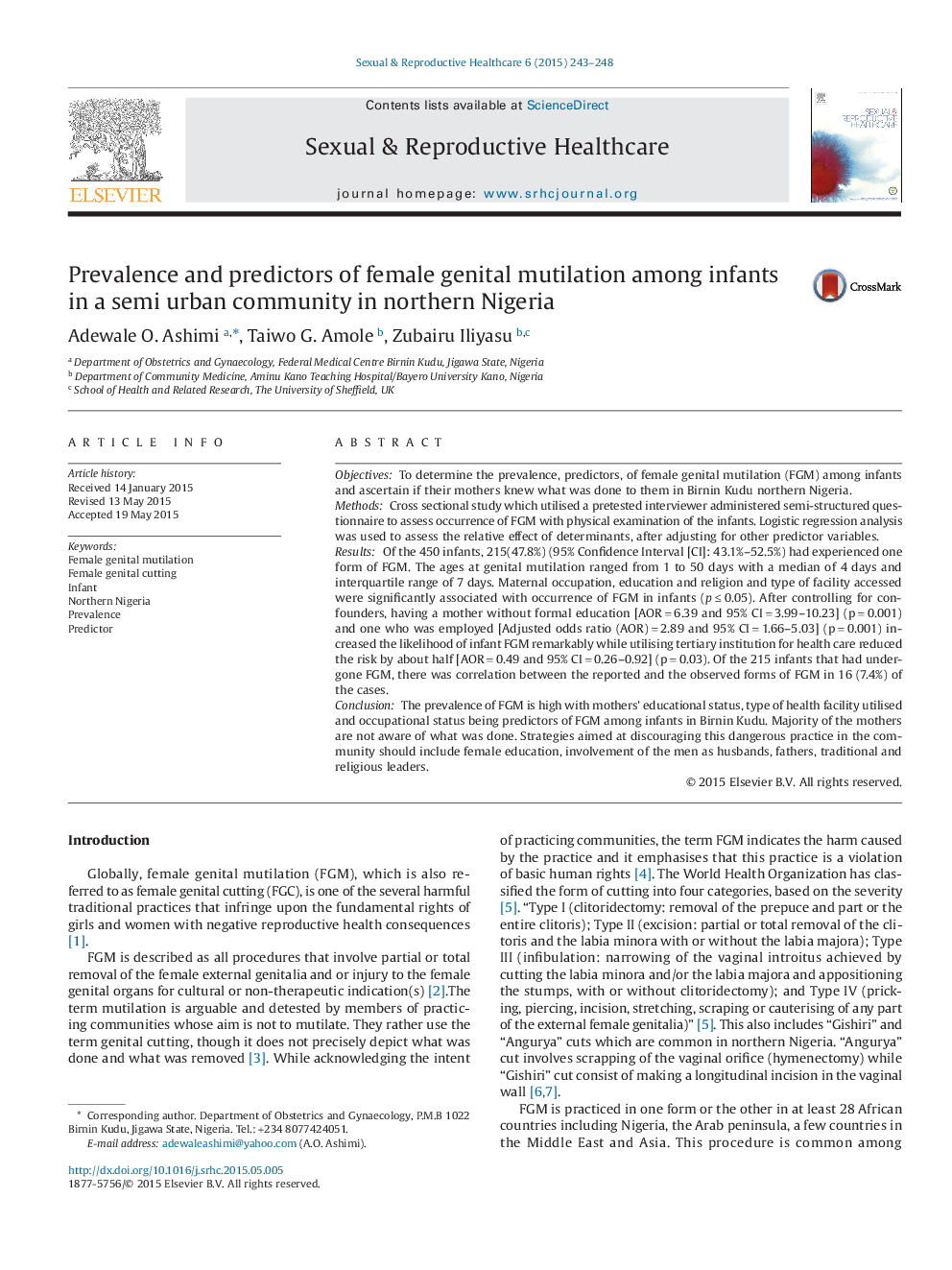| Article ID | Journal | Published Year | Pages | File Type |
|---|---|---|---|---|
| 2635745 | Sexual & Reproductive Healthcare | 2015 | 6 Pages |
•The prevalence of FGM among infant is high.•Mothers' educational status, type of health facility utilised and occupational status are predictors of FGM in this study.•Majority of the mothers are not aware of what was done.
ObjectivesTo determine the prevalence, predictors, of female genital mutilation (FGM) among infants and ascertain if their mothers knew what was done to them in Birnin Kudu northern Nigeria.MethodsCross sectional study which utilised a pretested interviewer administered semi-structured questionnaire to assess occurrence of FGM with physical examination of the infants. Logistic regression analysis was used to assess the relative effect of determinants, after adjusting for other predictor variables.ResultsOf the 450 infants, 215(47.8%) (95% Confidence Interval [CI]: 43.1%–52.5%) had experienced one form of FGM. The ages at genital mutilation ranged from 1 to 50 days with a median of 4 days and interquartile range of 7 days. Maternal occupation, education and religion and type of facility accessed were significantly associated with occurrence of FGM in infants (p ≤ 0.05). After controlling for confounders, having a mother without formal education [AOR = 6.39 and 95% CI = 3.99–10.23] (p = 0.001) and one who was employed [Adjusted odds ratio (AOR) = 2.89 and 95% CI = 1.66–5.03] (p = 0.001) increased the likelihood of infant FGM remarkably while utilising tertiary institution for health care reduced the risk by about half [AOR = 0.49 and 95% CI = 0.26–0.92] (p = 0.03). Of the 215 infants that had undergone FGM, there was correlation between the reported and the observed forms of FGM in 16 (7.4%) of the cases.ConclusionThe prevalence of FGM is high with mothers' educational status, type of health facility utilised and occupational status being predictors of FGM among infants in Birnin Kudu. Majority of the mothers are not aware of what was done. Strategies aimed at discouraging this dangerous practice in the community should include female education, involvement of the men as husbands, fathers, traditional and religious leaders.
